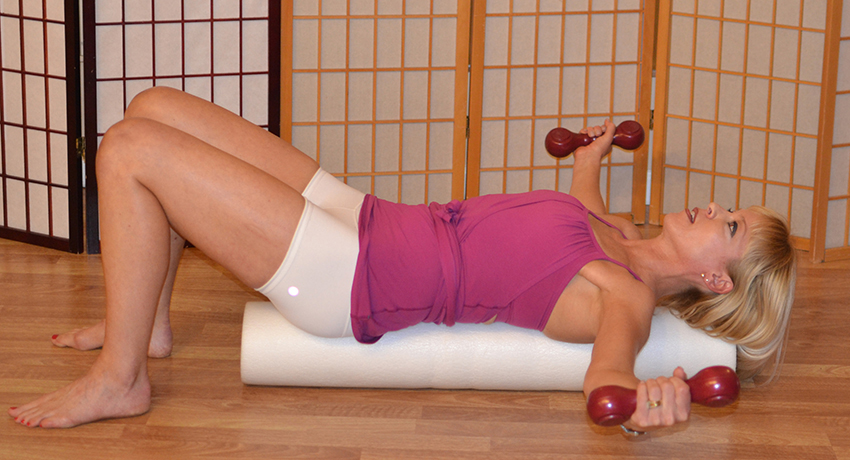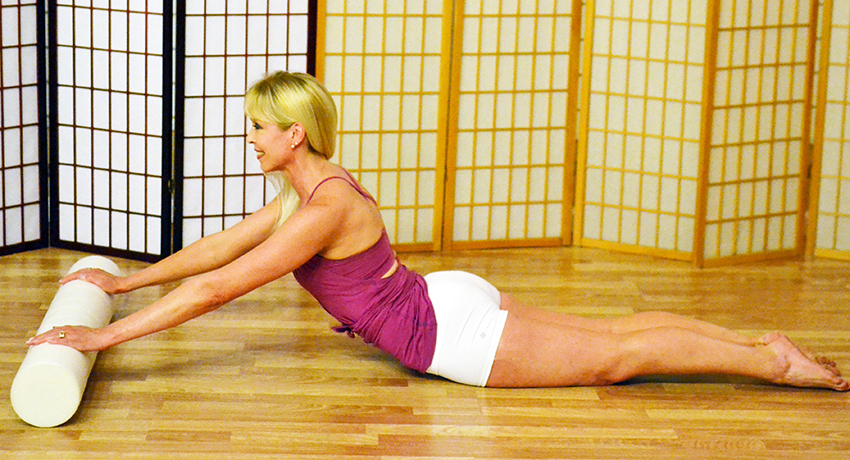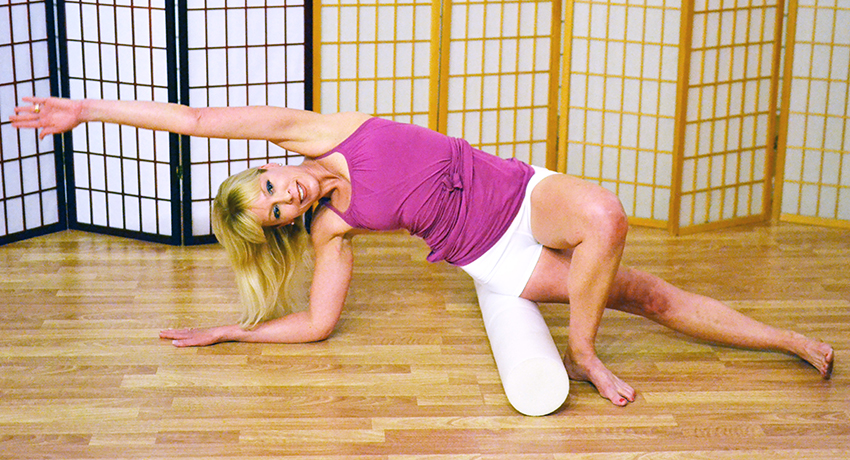Ask The Expert: How Do I Use a Foam Roller?
Unless you haven’t got off the couch in a while, you’ve most likely heard about the foam roller. The inexpensive piece of equipment is really just a foam tube but it can be used in a variety of ways to massage out tight muscles. We asked Julie Erickson, owner and instructor at Endurance Pilates and Yoga in Arlington, about the benefits of foam rolling.
Q: How do I use a foam roller?
A: As a therapeutic and performance enhancing tool, foam rollers assist in massaging sore and tight muscles and work to smooth out adhesions between the muscle and fascia under the skin. The roller applies pressure to areas of density within the myofascial system which is comprised of the muscles of the body and the fascia, a connective tissue that links muscle systems within the body, like a stocking covering the body and connecting one muscle or group of muscles to another. Adhesions are places where the muscle and fascia may have become stuck to one another, leading to stiffness and possibly lack of mobility or sensory perception in that area. This can occur from lack of use, injuries, scar tissue, or improper muscle recruitment or patterning. Rolling works like a sports massage to break down these areas of tension and begins to smooth out the fascia, correcting the proper muscular function and relieving the areas of tension.
A foam roller can also be used as a supportive mechanism to support particular areas of the body while tight areas are allowed the freedom to stretch and open. It can also be used as a prop or tool to enhance an exercise or to make a particular exercise or yoga pose more accessible to a student.
There are different types of foam rollers so be sure to shop around. There are many different kinds of thicknesses, shapes, and materials to choose from. Try starting with a softer roller and graduate to a more middle density roller and then maybe to the high density black or even the spiky rollers.
Here are three ways to use a foam roller:

Foam Roller exercise photos were all provided by Julie Erickson.
Chest Expansion- Pec Minor Stretch
The front of the shoulders can be a very tight place for many athletes. Opening up the chest before a race or even before a workout at the end of a long, stressful day can be very important to the proper positioning of the upper torso.
Lengthwise along the foam roller, pull the core and abdominal muscles in for support and hold small weights in your hands. You want to keep it light enough to control, but just heavy enough to get a stretch. With a soft bend at the elbow, allow arms to open to the sides and stretch the front of the shoulder and the chest. Do five large circles in each direction with control, allowing the shoulder joint to move through its full range. The roller will give the spine, glutes and lower back feedback as to the body’s proper placement.

Swan
Swan is an amazing back and hip extensor workout, but can be inaccessible to some students because of tightness or injury in the shoulder. For those with tight shoulders, the foam roller can make doing a swan a possibility, with the benefits from the extensor work and torso lengthening without putting additional pressure on and injured or tight shoulder. The foam roller becomes a rolling tool to assist the student into the proper start position and helps maintain awareness of proper muscle engagement throughout the exercise. Swan uses all of the back extensors while maintaining stability in the deep core.
How to do it:
Extend arms and hands pushing into foam roller. Engage your core, thighs, glutes, and hamstrings to pull the belly off the floor, stretching the hip flexors to lengthen the upper body away from the mat starting with the crown of the head reaching out and then up. The shoulder blades should be down and back and the chest and arms pull through the pinky finger edge of the hand to engage the lats and stretch the entire front of the body from the crown of the head to the pubic bone. Be careful to stretch the front of the body versus over-extending the lower back. Repeat five times.

IT Band Opener/Lateral Flex
Sit your hip alongside the foam roller, positioning it at the very top of the hip. Press your bottom leg into the floor for support and extend that leg. Bend your top knee and place that foot flat on the floor. Pull your torso back so that your entire body is in alignment. Draw the upper body over the roller so that it slides down the length of the outer leg as slow and controlled as necessary. Pause for any points that need attention. Focus on your breath and move up or down. Repeat for the upper leg stopping at any points of tension. Once you’ve opened a particular point, ground the leg and reach and stretch the upper body. Hold each stretch for 30 seconds and repeat on the other side.


